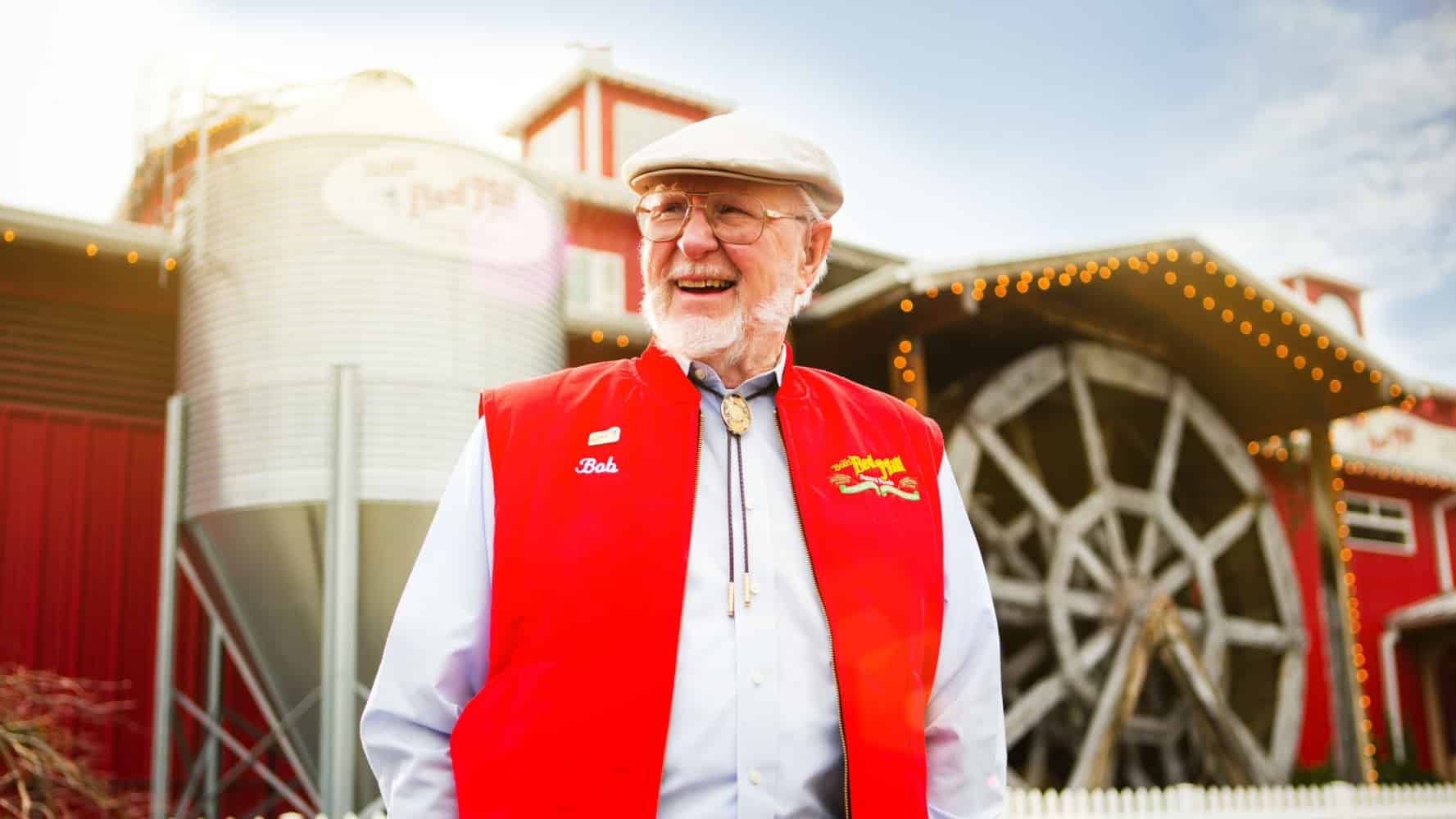In the world of natural foods, few stories are as compelling and heartwarming as that of Bob’s Red Mill, founded by the visionary Bob Moore. Moore, who passed away at the age of 94, left behind not only a legacy of promoting whole grains but also a revolutionary business model that reshaped the industry. His dedication to natural ingredients and his employees set Bob’s Red Mill apart, making it a beacon of quality and commitment.
Bob’s Red Mill was born from humble beginnings in Oregon in 1978. Alongside his wife Charlee, Bob Moore transformed a small operation into a global empire known for its vast array of over 200 products. Yet, it was Moore’s unconventional decision in 2010 that truly marked a turning point.
The Birth and Growth of Bob’s Red Mill
Bob’s Red Mill started with a simple mission: to provide wholesome, natural foods to people everywhere. In 1978, Bob Moore and his wife Charlee began this journey in Oregon with a small operation dedicated to quality and nutritional integrity. Their commitment to producing natural, stone-ground products laid the foundation for what would become a global phenomenon.
From those humble beginnings, Bob’s Red Mill grew exponentially. The company’s dedication to natural ingredients and traditional milling techniques resonated with consumers seeking healthier options. Over the years, their product line expanded to include over 200 items, ranging from stone-ground flours to cereals and baking mixes. Today, Bob’s Red Mill products are available in more than 70 countries, a testament to the universal appeal of their commitment to quality and health.
The company’s growth was not just about increasing sales and expanding product lines. Bob’s Red Mill became a trusted name by maintaining the highest standards of production and by staying true to the values upon which it was founded. This dedication helped the company build a loyal customer base and establish itself as a leader in the natural foods industry.

Who Owns Bob’s Red Mill? Pioneering the Employee-Owned Business Model
The question “Who owns Bob’s Red Mill?” leads to a unique and inspiring answer: its employees. The journey to this ownership model began with Bob Moore’s vision of a fairer workplace where everyone who contributed to the company’s success could share in its rewards.
In 2010, Bob Moore made a groundbreaking decision that would forever change the future of his company. Instead of selling Bob’s Red Mill to a multinational corporation, he chose to implement an Employee Stock Ownership Plan (ESOP), making Bob’s Red Mill an employee-owned company. This bold move was a testament to Moore’s deep-seated belief in fairness and the power of collective effort.
The transition to an employee-owned structure was not without its challenges. It required careful planning, clear communication, and a commitment to education. Moore and his leadership team ensured that all employees understood the implications and benefits of the ESOP. By fostering an environment of transparency and openness, they helped build a strong foundation for this new ownership model.
Today, the employees of Bob’s Red Mill are more than just workers; they are stakeholders with a vested interest in the company’s success. This ownership model has cultivated a culture of empowerment and accountability, where every employee is motivated to contribute to the company’s ongoing success. It was not merely a business strategy; it was a reflection of Moore’s values. He believed that those who contributed to the company’s success should also share in its prosperity. By giving employees a stake in the company, Moore ensured that Bob’s Red Mill would remain true to its mission and maintain its high standards of quality and integrity.
The decision to become employee-owned has not only secured the future of Bob’s Red Mill but has also set a shining example for other businesses seeking to create more inclusive and equitable work environments.
The Impact of Employee Ownership on Bob’s Red Mill
The transition to an employee-owned company had a profound impact on the culture and operations of Bob’s Red Mill. By implementing the Employee Stock Ownership Plan (ESOP), Bob Moore not only secured the future of his business but also fundamentally transformed its workplace dynamics.
Enhanced Employee Engagement and Productivity
One of the most significant changes was the increase in employee engagement and productivity. Knowing they had a direct stake in the company’s success, employees became more motivated and dedicated to their work. This sense of ownership led to higher levels of job satisfaction and a stronger commitment to maintaining the quality and integrity that Bob’s Red Mill is known for.
Fostering Innovation and Collaboration
The employee-owned structure also fostered a culture of innovation and collaboration. With a shared goal of driving the company forward, employees were more inclined to share ideas and work together to solve problems. This collaborative environment encouraged creativity and continuous improvement, helping Bob’s Red Mill to stay competitive in the ever-evolving natural foods market.
Building a Resilient and Loyal Workforce
Employee ownership has helped Bob’s Red Mill build a resilient and loyal workforce. The sense of belonging and shared purpose has reduced turnover rates and created a stable, dedicated team. This stability has been crucial in maintaining the high standards of quality that customers expect from Bob’s Red Mill products.
Strengthening the Company’s Mission
The ESOP has reinforced the company’s mission to provide wholesome, natural foods while promoting a healthier society. By ensuring that employees are invested in the company’s success, Bob’s Red Mill has been able to stay true to its core values and continue delivering products that meet the highest standards of quality and nutritional integrity.
In summary, the impact of employee ownership at Bob’s Red Mill extends far beyond financial benefits. It has created a thriving, collaborative, and motivated workforce that is committed to the company’s long-term success and mission. This pioneering approach has set a benchmark for other companies seeking to integrate employee welfare into their core business strategies.

My Personal RX on Enhancing Business Health through Employee Wellness
The health of a business is intricately linked to the health of its employees. A positive, healthy working environment not only boosts productivity but also enhances overall job satisfaction and loyalty. As a healthcare professional, I recommend that businesses invest in the physical and mental wellness of their employees as a strategic component of their overall success.
- Promote Nutritional Wellness: Encourage healthy eating habits by providing access to nutritious foods in the workplace. Consider offering supplements like MindBiotic to employees to support their gut-brain health. The unique combination of probiotics, prebiotics, and Ashwagandha KSM 66 in MindBiotic can help improve cognitive function and reduce stress, benefiting overall productivity and workplace morale.
- Create a Supportive Environment: Ensure the work environment supports not just physical but also mental health. This can include ergonomic workstations, quiet spaces for breaks, and a generally supportive atmosphere that fosters employee well-being.
- Encourage Regular Breaks: Promote taking regular breaks to prevent burnout and maintain high levels of productivity. Short, frequent breaks allow for mental refreshment and can reduce stress, which is beneficial for both gut health and mental clarity.
- Foster Open Communication: Cultivate an environment where employees feel comfortable discussing their health and wellness needs. Open communication can help identify and address wellness issues before they impact productivity.
- Offer Flexibility: Where possible, offer flexible working hours or the option to work from home. Flexibility can greatly reduce stress and improve work-life balance, which is crucial for mental health and job satisfaction.
- Invest in Health Education: Provide resources that can help employees maintain their health and wellness. Among the resources I offer, my newest book Heal Your Gut, Save Your Brain can help understand the importance of gut health in achieving optimal mental wellness and overall health, empowering them with the knowledge to make healthier lifestyle choices.
- Implement Wellness Programs: Develop and implement comprehensive wellness programs that address both physical and mental health. These programs could include fitness memberships, mental health days, and wellness workshops focusing on topics like stress management and healthy eating.
Featured image from Bob’s Red Mill website




















